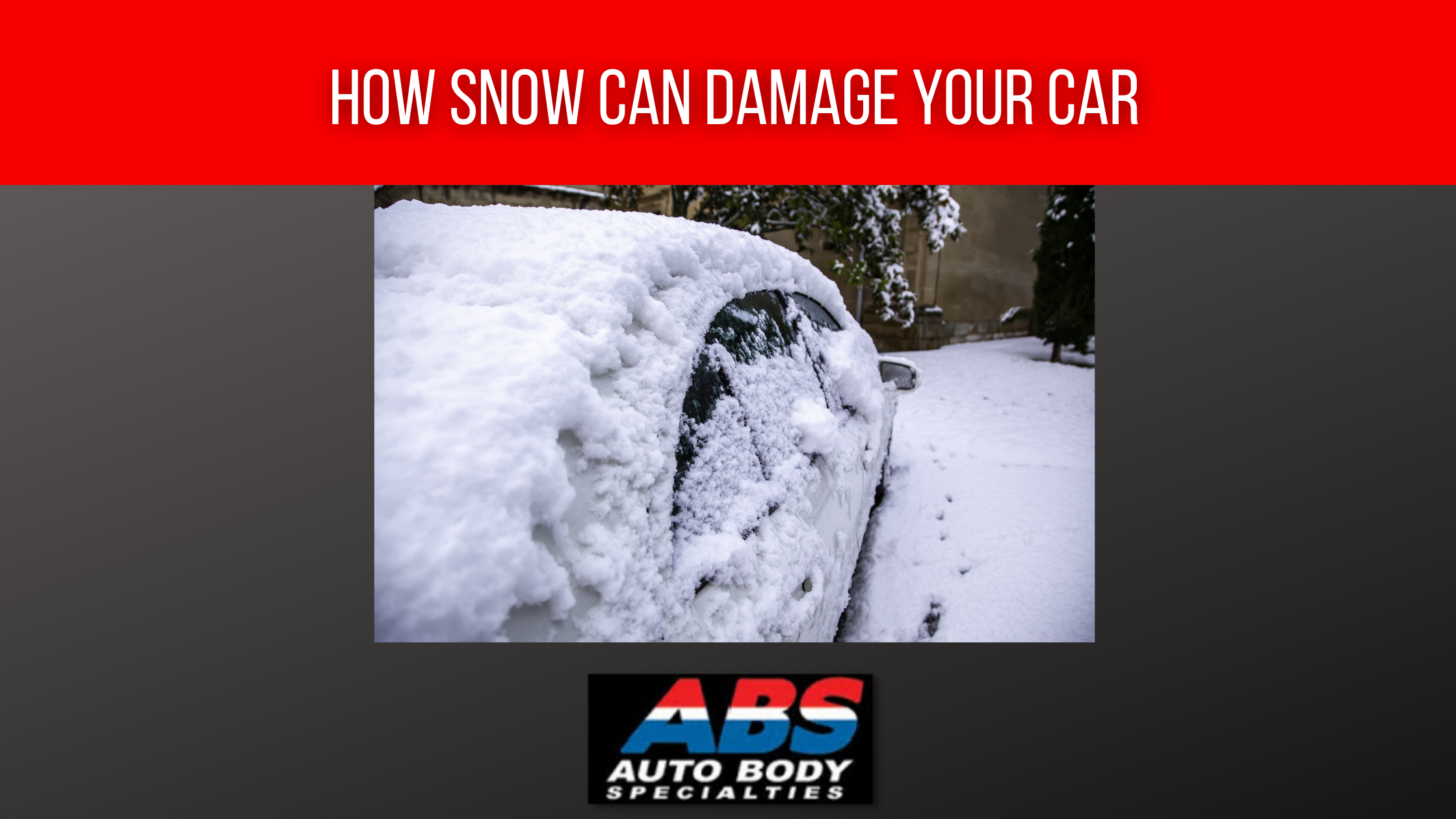
Late fall is here, and many Connecticut residents will soon be dealing with the usual problems of our crazy winter weather. Last month we did a blog on how fallen leaves can damage your car but this month we switching it up to how snow can damage your car. A lot of people think that the only way for snow to damage a car is for someone to be driving in it and end up in a collision. This is untrue as a lot of the damage from snow can occur if the car is simply parked with accumulated snow on it.
How does road salt from snow and ice storms damage a car?
From a car’s brakes to its engine block, any metal part on a car can corrode when salt from the roads reacts with water and oxygen. Snow plays a part in this damage because as it begins to melt, the water mixes with the salt and air and the corrosion can start. The parts of a car that are at the most risk from this damage are the wheels, brakes, exhaust, muffler, and other metal part that is close to ground. You car’s paint is also at risk because the same salt that can corrode metal can also cause the paint to lift away and peel off.
Snow can damage a car’s wiper blades.
Thin layers of snow and ice can form around the blades that are in contact with the windshield. To prevent this, you should always raise your wiper blades before a snow or ice storm arrives. When the storm is over you should thoroughly remove any trace of ice from the wiper blades before putting them into the proper place again. Leaving the ice in place can also damage your windshield as it can be scratched by very thin layers of compressed snow and ice.
Snow can also damage the inside of a car.
Believe it or not, snow can damage the inside of your car as well. When you carry snow in the car from your clothing or boots, it may seep into your carpets and then make its way down to any small cracks and crevices underneath the carpet. When the car is parked outside and it is below freezing, that melted snow can freeze and expand those cracks causing more damage.
The weight of snow can also damage your car.
Heavy wet snow can easily put stress on your car’s exterior and windshield. When heavy snow sits on a windshield for an extended period of time, it can cause the adhesive holding the windshield in place to weaken. This will, in turn, cause the windshield to become loose. Heavy snow can also cause stress cracks in the glass of the windshield. Stay ahead of this windshield damage by removing the snow with a shovel. Using a plastic shovel will lessen the chance of scratches in the car’s paint. Watch the snow on the car’s roof as well. Heavy snow can cause the exterior to become dented. This is costly to fix and can lower the value of your car.
 US Dollars
US Dollars
 CANADIAN
CANADIAN
